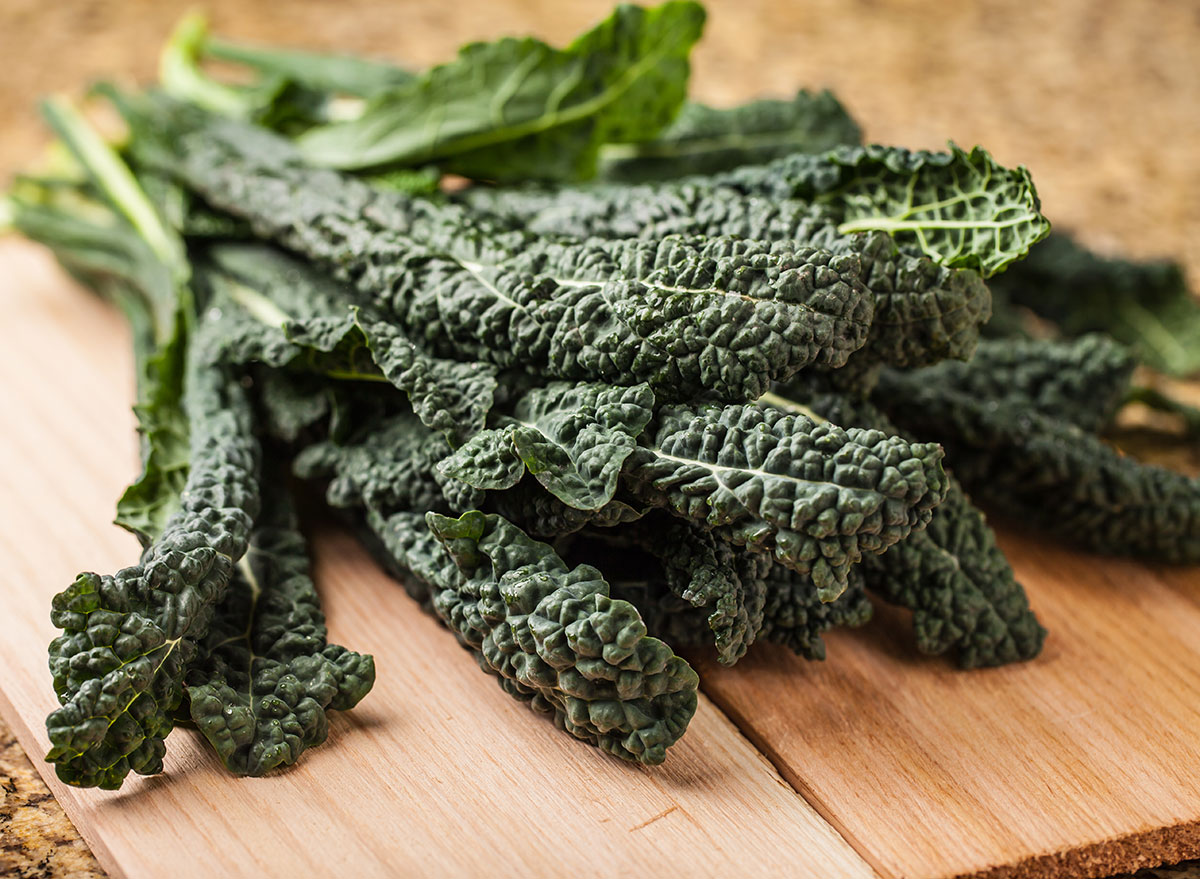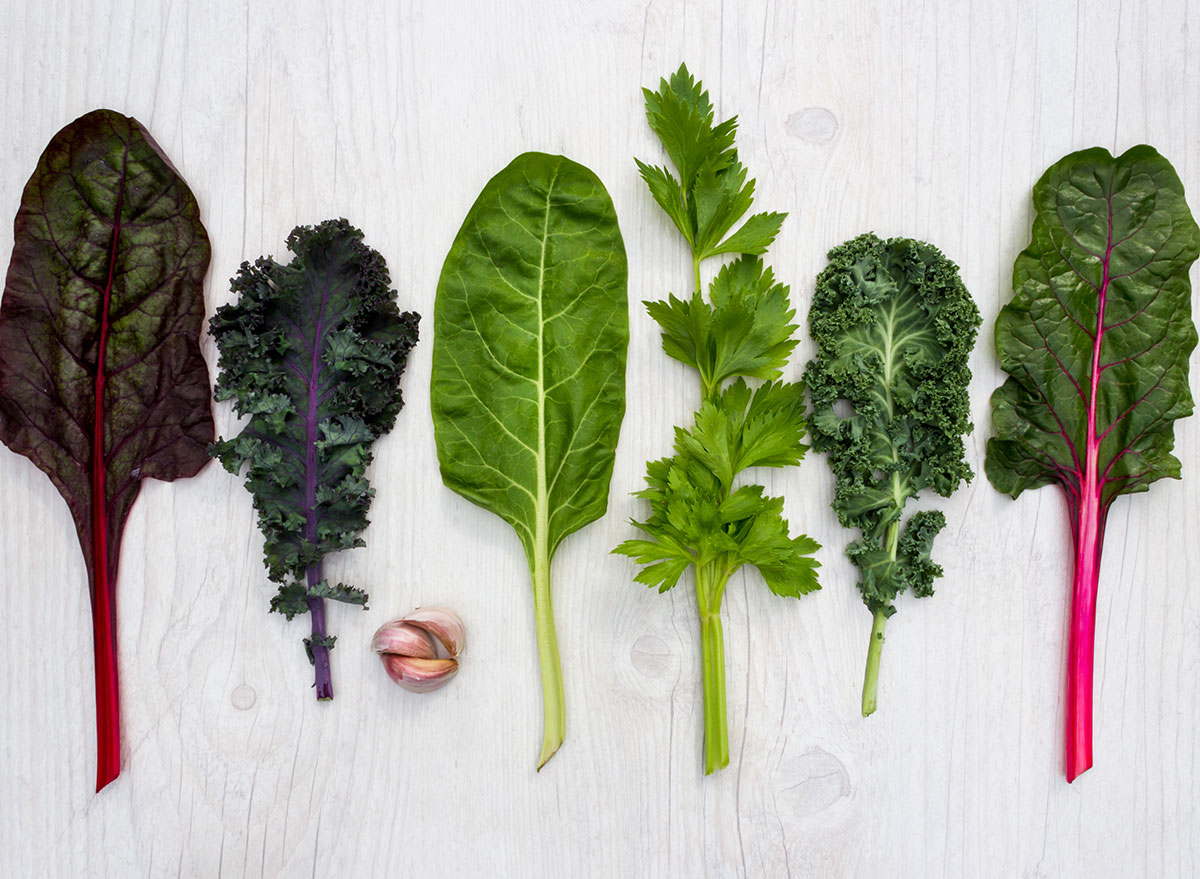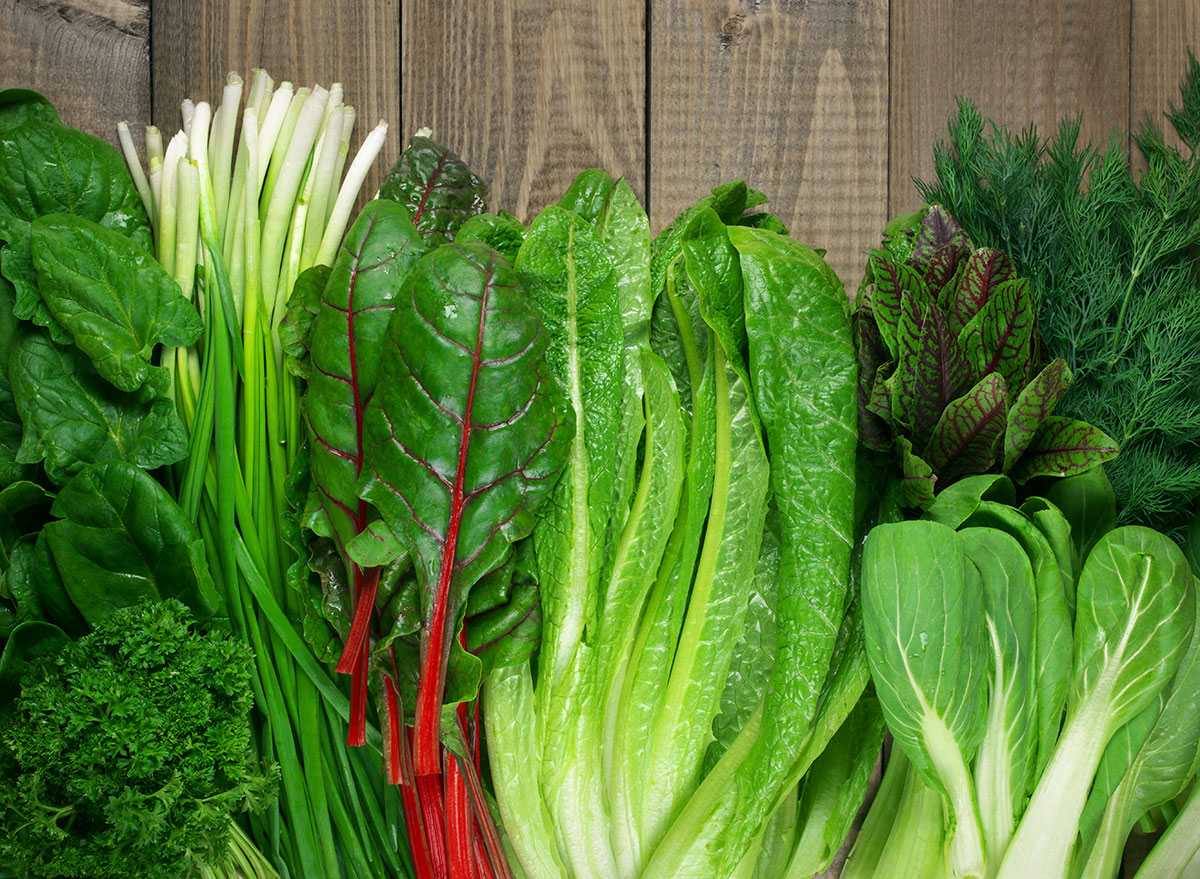What Happens To Your Body When You Eat Leafy Greens

What’s your favorite type of leafy green? Maybe it’s something ultra-rich in nutrients such as collard greens or spinach, or maybe it’s a lighter variety such as arugula or romaine lettuce.
Regardless of your preference, it’s key to eat a variety of leafy greens each week to ensure you’re not missing out on any of the key vitamins and minerals each kind packs. Below, you’ll see just five health benefits leafy greens provide, and after, be sure to check out The 7 Healthiest Foods to Eat Right Now.
Your cholesterol levels may drop.

Eating leafy greens over an extra serving of meat, seafood, or cheese could really help to lower your LDL (harmful) cholesterol levels. In addition, the soluble fiber in certain leafy greens, such as Swiss chard, can help to prevent cholesterol particles from being absorbed into the bloodstream by binding to it in the intestines and excreting it through waste. Regular consumption of leafy greens that are rich in soluble fiber can, in part, help lower your risk of heart disease
Have a reduced risk of age-related macular degeneration.

Age-related macular degeneration (AMD) is an eye disease that can reduce or completely eliminate your central vision which can hinder activities such as driving and reading. AMD can also inhibit people’s ability to recognize faces and cook meals in the kitchen. One of the ways you can prevent AMD, aside from not smoking and getting regular exercise, is to eat more leafy green vegetables and fruits. Kale especially has high levels of lutein and zeaxanthin, which are two antioxidants that may help to slow vision loss.
Lower risk of type 2 diabetes.

Since leafy greens such as spinach and collards provide an excellent source of fiber, this alone can help you maintain healthy blood glucose (sugar) levels. Foods that are high in fiber can help slow digestion, which then also slows the rate at which sugar is absorbed into the bloodstream. This reduced absorption rate can then help prevent high blood sugar (hyperglycemia) and regulate blood glucose levels.
May improve your memory.

A report published in the journal Neurology in 2017 revealed that a diet containing about one serving of leafy green vegetables each day was associated with a slower age-related cognitive decline. Based on average global cognitive scores over time, the rate of cognitive decline among participants who consumed the most servings of leafy green vegetables compared to those who ate the least was equivalent to being 11 years younger (cognitively speaking).
Supports bone health.

Kale is extremely rich in vitamin K, which is not only essential for blood clotting but also for bone health. Just one 1/2 cup of cooked kale provides 565 micrograms (mcg) of vitamin K, which is over 600% of a woman’s daily needs and just under 500% of a man’s. For context, the average adult woman needs about 90 mcg of vitamin K daily whereas men need about 120 mcg. Your body needs vitamin K to help form osteocalcin, which is a protein that plays a key role in bone formation. It also helps to sustain bone health.
For more, be sure to read What Happens to Your Body When You Drink Bone Broth.








